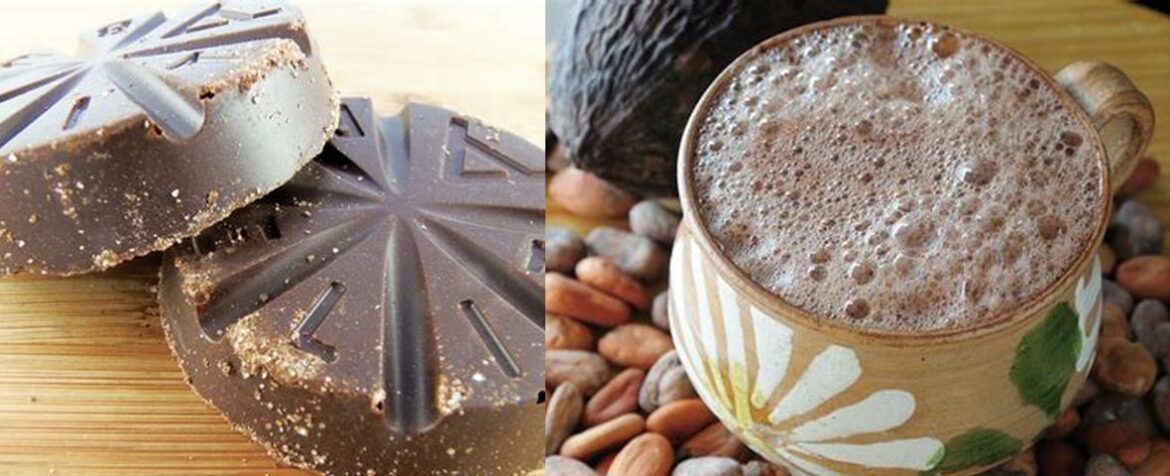Mexican chocolate substitute: Craving the unique flavors of Mexican chocolate but don’t have any on hand? Don’t fret! We’ve got you covered with the ultimate guide to Mexican chocolate substitutes. Whether you’re a fan of the sweet, spicy, or earthy notes that make Mexican chocolate so irresistible, we’ll show you how to recreate those flavors using ingredients you probably already have in your pantry. Get ready to embark on a delicious adventure where we unlock the secrets of Mexican chocolate substitutes. From unexpected twists to tried-and-true alternatives, we’ll help you satisfy your cravings and spice up your culinary creations. So, grab your apron and join us as we dive into the world of Mexican chocolate substitutes. Prepare to be amazed!
Mexican Chocolate Substitutes: Unlocking the Sweet, Spicy, and Earthy Notes
Mexican chocolate, a harmonious blend of cacao, sugar, spices, and nuts, stands as a culinary treasure, captivating taste buds with its distinctively spicy, earthy, and sweet symphony. This unique confection finds its way into an array of traditional recipes, from the rich, complex mole sauce to the indulgent decadence of cakes and cookies. However, circumstances may arise when this delectable ingredient is not readily available, leaving home cooks and culinary enthusiasts seeking suitable alternatives. Fear not, for an array of substitutes awaits, each possessing its own merits and nuances, ready to step into the role of Mexican chocolate and elevate your culinary creations.
1. Chocolate Chips: A Classic Stand-In for Sweetness and Creaminess
Chocolate chips, beloved for their sweet and creamy disposition, emerge as a classic substitute for Mexican chocolate, particularly in cookies, cakes, and other dessert delights. Crafted from roasted and ground cocoa beans, sugar, and milk, chocolate chips offer a versatile flavor profile that blends seamlessly into various culinary applications. Whether you prefer the milky smoothness of milk chocolate chips or the deeper, more intense notes of dark chocolate chips, this substitute promises to deliver a satisfying chocolate experience.
2. Bittersweet or Semi-Sweet Chocolate: Unveiling the Depths of Dark Chocolate’s Allure
Bittersweet and semi-sweet chocolate, boasting a higher percentage of cocoa solids and a reduced sugar content compared to milk chocolate, unveil the captivating depths of dark chocolate’s allure. Their deep, rich flavor and smooth, velvety texture make them ideal substitutes for Mexican chocolate in baking and cooking endeavors. However, to avoid overwhelming bitterness, consider opting for a lower percentage of cocoa solids when employing these substitutes.
3. Unsweetened Cocoa Powder: Unleashing the Raw Power of Pure Chocolate Essence
Unsweetened cocoa powder, the embodiment of raw chocolate essence, offers an intense, bitter flavor that demands culinary respect. Derived from 100% cacao beans, this potent ingredient finds its niche in sauces and marinades, imparting an intense chocolate flavor without overpowering sweetness. However, due to its potency, use unsweetened cocoa powder sparingly, employing lesser quantities than Mexican chocolate in your recipes to achieve a balanced flavor profile.
4. Dark Chocolate: Embracing the Richness of a Close Sibling
Dark chocolate, a close sibling to Mexican chocolate, shares similar taste and textural characteristics, making it a natural contender for substitution. Its higher cocoa solids content and lower milk content bestow upon it a rich, intense flavor and a firm yet velvety texture. To emulate the unique flavor profile of Mexican chocolate, consider incorporating cinnamon and nuts into your dark chocolate creations.
5. Carob Powder: A Unique Contender with Hints of Chocolate
Carob powder, derived from the carob tree, emerges as a unique ingredient, possessing a slightly sweet taste with subtle hints of chocolate. While not as intense as cocoa powder, carob powder’s smooth texture lends itself well to creating rich and creamy desserts. To utilize carob powder as a substitute for Mexican chocolate, simply add the desired amount to your recipe, omitting the sugar to maintain a balanced sweetness. The resulting dish will mirror the flavor and consistency of traditional Mexican chocolate while offering a reduced sugar content.
As you embark on your culinary adventures, remember that these substitutes provide a starting point for exploration. Experiment with different combinations and ratios to discover the perfect balance of flavors that suits your palate. Embrace the opportunity to unlock new dimensions of taste and create dishes that celebrate the spirit of Mexican chocolate, even in its absence.
FAQ about Mexican Chocolate Substitute
Q: What are some suitable substitutes for Mexican chocolate?
A: Some suitable substitutes for Mexican chocolate include chocolate chips, cocoa powder, and a combination of cinnamon and cocoa powder.
Q: Can I use chocolate chips as a substitute for Mexican chocolate?
A: Yes, chocolate chips can be used as a substitute for Mexican chocolate, especially in desserts like cookies and cakes.
Q: What flavors do chocolate chips offer as a substitute for Mexican chocolate?
A: Chocolate chips offer a versatile flavor profile, ranging from the sweet and creamy taste of milk chocolate to the deeper and more intense notes of dark chocolate.
Q: What other substitutes can I use besides chocolate chips?
A: Besides chocolate chips, you can also use cocoa powder or a combination of cinnamon and cocoa powder as substitutes for Mexican chocolate.
Q: How can I experiment with substitutes to find the perfect balance of flavors?
A: To find the perfect balance of flavors, you can experiment with different combinations and ratios of substitutes. This will allow you to discover the taste that suits your palate and create dishes that celebrate the spirit of Mexican chocolate.
Q: Are there any other tips for using substitutes for Mexican chocolate?
A: Yes, as you embark on your culinary adventures, remember that substitutes provide a starting point for exploration. Embrace the opportunity to unlock new dimensions of taste by experimenting with different substitutes and ratios to create unique and delicious dishes.


